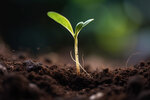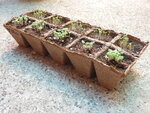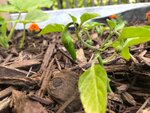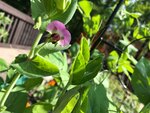 Narrowsburg
NarrowsburgLight Rain Fog/Mist, 43°
Wind: 8.1 mph
 Narrowsburg
Narrowsburg



This past winter was a rough(ish) one; now that spring is on its way, it’s time to see some green growth. And that means taking matters into your own hands by starting seeds and planting seedlings.
Before doing anything, check the last frost date for your area. There’s nothing worse for your motivation (and your wallet) than to get seeds or seedlings into the ground, only to have them freeze and die due to a surprise late frost.
According to the Old Farmer’s Almanac, the average last frost date for the Narrowsburg, NY area is May 11; however, the weather has been so unpredictable lately, it’s probably safer to tack on a week or 10 days to that timeline.
Once the frost date is determined, refer to a planting calendar for when to plant what. The Old Farmer’s Almanac is again a great resource; Google has a plethora of information, too.
Generally, though—especially if you’re planting vegetables—there are some tried-and-true examples to follow. Some seeds are best started indoors and carefully tended until they become hardy seedlings to transplant to your garden. Others prefer to go right into the ground and begin their life there.
Don’t skip this advice: Read the seed packet for exactly when and how to plant that seed, whether indoors or directly sown into the garden.
Starting seeds indoors
Giving plants a good head start is the main benefit of indoor seed-starting. Quite a few vegetables and flowers have a long growing season, and our summer season doesn’t coincide with that length of time.
The roots of some plants—peppers and cauliflowers, for example—grow slowly and thus thrive with an early start.
There’s a financial benefit to starting seeds yourself, too: A packet of 100 seeds most likely will cost much less than a four-pack of seedlings at a nursery.
Tools abound for seed-starting, ranging from trays with peat pots to mini-greenhouses and electric heating mats.
But an old egg carton (poke holes in the bottom for drainage) with soil in each cell, covered with plastic film (also poked with holes) and placed on a tray, is an inexpensive way to start seeds indoors.
Just be sure to place your seed-starting setup in a bright spot in your home, where the temperature doesn’t fall below 65 degrees Fahrenheit.
Watering is important—the plastic film will help keep the soil moist; just remove it once the seeds germinate. But be careful not to drown tender seeds. Especially when it comes to pepper and tomato seeds, a regular spritz with a spray bottle will soak the soil perfectly.
Vegetables
Pepper seeds, sweet and hot, should really be started indoors between March 1 and March 16 around here.
Halfway through March, start seeds for eggplant, cabbage, kale and tomatoes.
At the end of the month, it’s time to start seeds for lettuce and spinach.
The middle of April is prime time to start squash, melon and cucumber seeds indoors.
Flowers
Of course, flowers are just as important to our gardens as vegetables. So why not start flower seeds, too? Start marigolds at the same time as cabbage; seeds for sunflowers, cosmos, and nasturtiums can be started about a week later.
No matter what you start, the satisfaction you’ll get from that first peek of green sprouts is one to remember.
Planting outdoors
Fast-growing, cold-hardy vegetables such as peas and radishes are fun and easy to plant outdoors as early as mid-to-late March, with a great return on investment. Make sure peas (from sugar snaps to garden peas, and ornamental sweet peas, too) have a sturdy support to hold their trailing tendrils.
Once the danger of frost has passed, gardening gets into full swing. You can take those seedlings you started and “harden” them off before moving them to the garden full-time. The process is simple: about a week before transplant time, move the trays of seedlings outside to a wind-protected, sun-dappled spot, starting with an hour outdoors and extending the time each day. Keep an eye on the soil, and water as needed.
When it’s time, create planting holes in your prepared garden plot—remember to check those seed packets or seedling tags for advice on spacing—and carefully tuck in your transplants. Leggy seedlings, and especially tomato seedlings, can be planted much deeper than they were in their seed pots. That allows for more root development.
Good luck with the beginning of your growing season!
Comments
No comments on this item Please log in to comment by clicking here